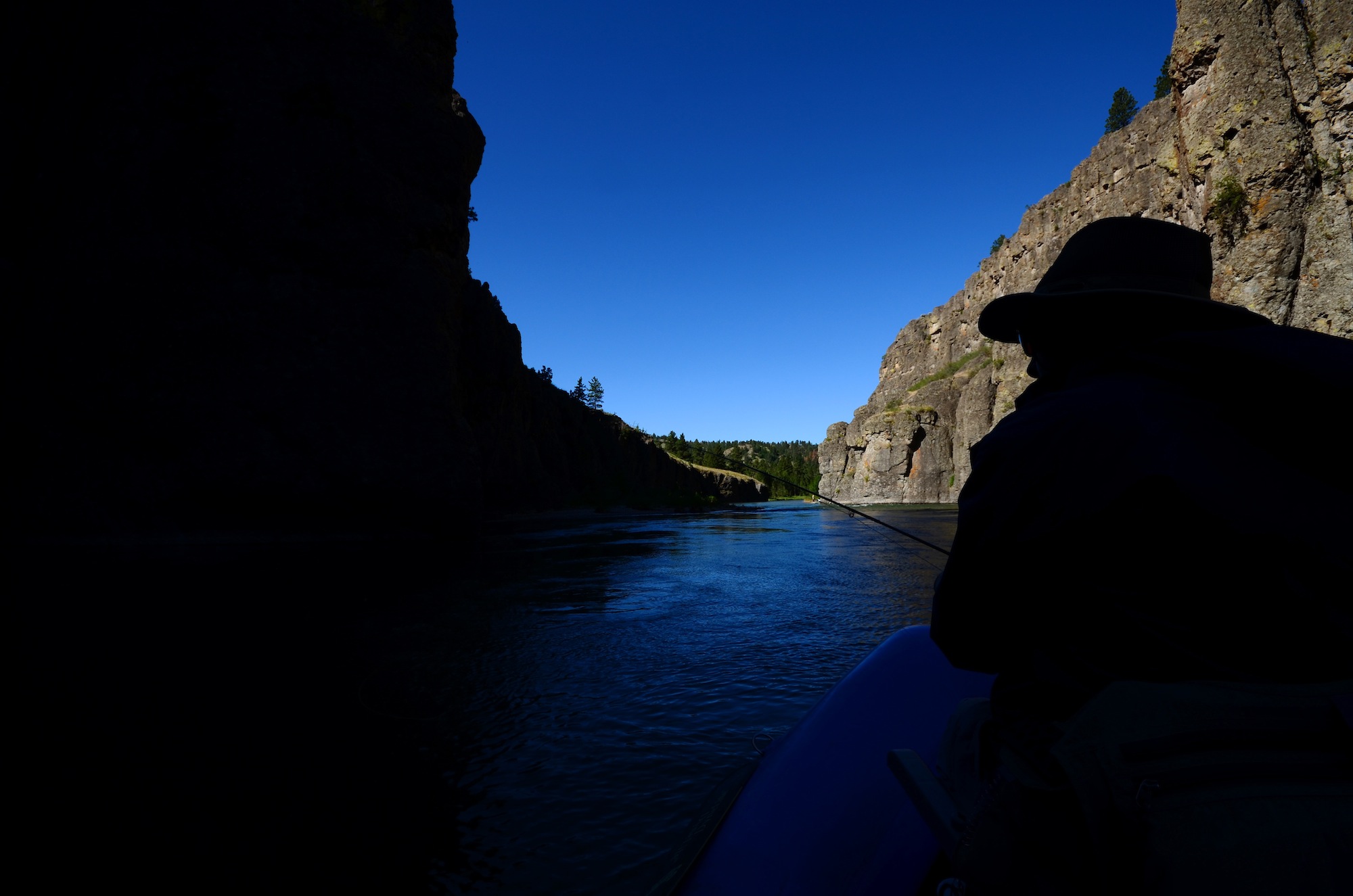[vc_row height=”auto” width=”full”][vc_column width=”1/1″][rev_slider_vc alias=”dearborn1″][/vc_column][/vc_row][vc_row][vc_column][vc_column_text]
THE DEARBORN RIVER
The Dearborn River has it’s headwaters on the Continental Divide west of Craig. This beautiful stream offers scenic wade fishing for most of the year, but from opening day (3rd Saturday in May) through the 4th of July, there is enough water to float the incredible lower Canyon to its confluence with the Missouri River. The long but beautiful float requires a long day and lots of effort from both the guide and angler. If you think you’ve hucked a streamer for a full day, you haven’t. Not until you’ve thrown it for 20 miles while searching for one of the large Browns that occasionally get caught in the Dearborn. This is a freestone river, so you can leave the tiny nymphs and split shot at home. Salmonflies and Golden Stones bring the trout to the surface, so big dry flies are the rule. When river conditions are higher, we pound the water with large, heavy streamers.[/vc_column_text][/vc_column][/vc_row][vc_row us_bg_image=”191″ us_bg_parallax=”vertical” us_bg_image_source=”media”][vc_column width=”1/1″][vc_column_text]
A WILDERNESS CANYON
The Dearborn is one of those places people describe as “worth the float even if I didn’t catch anything”. We agree that it is incredibly beautiful. It’s actually amazing. But a handful of fish in 20 miles makes for a long day, and we like to catch fish. As long as you pick the right water conditions – not rising and somewhat clear – you should have a decent to great day. The Dearborn acts as a spawning tributary and nursery for Missouri River trout, so you can expect to catch quite a few smaller fish. Big Brown trout do live here. You just need to know where they live and what fly they want to eat. We highly recommend this trip for those who appreciate wilderness and solitude, or for those who have fished it all and want to see something new.[/vc_column_text][/vc_column][/vc_row][vc_row][vc_column width=”1/2″][vc_column_text]
DEARBORN RIVER GEAR
We typically float the Dearborn in rafts, so if you don’t like rafts, you probably won’t like 20 miles in one (we occasionally use drift boats, and for 2014 will be using the new NRS Freestone Inflatable Drift Boat).Thunderstorms are common, so bring your good rain gear, and some fleece layers to keep warm. A 5 weight is fine at low flows, but you’ll also want a 6 or even 7 weight for throwing streamers and large dries all day. Make sure and bring some kind of dry bag for your gear. And don’t forget a camera.
BOOKING A TRIP
The Dearborn float season is short, and flows can be erratic depending on run-off. The often ample rainfall that we receive during May and June can move flows up or down on the Dearborn in a hurry. Our recommendation is to book a 3-4 day guided trip sometime between the 3rd Saturday in May and the end of June. If the stars line up, you should be able to do a day or two on the Dearborn. Because it’s such a long day, most people don’t do it back to back. That much scenery and fishing can exhaust you. If the Dearborn isn’t in the right shape for fishing, there’s good news. May is often the most productive fishing month on the Missouri River. That’s a pretty good plan B!
ARE YOU READY?
Because access is so limited, we don’t recommend the Dearborn for those who prefer a shorter, more casual day. If you have health problems, consider the fact that emergency responders would have to use a helicopter to get into the Dearborn, and there is no cell phone service for the entire float. You and your guide will be plenty tired at the end of the day, so make sure you’re up for it.[/vc_column_text][/vc_column][vc_column width=”1/2″][us_image image=”192″ size=”full” link=”” onclick=”lightbox”][us_image image=”191″ size=”full” link=”” onclick=”lightbox”][/vc_column][/vc_row]
